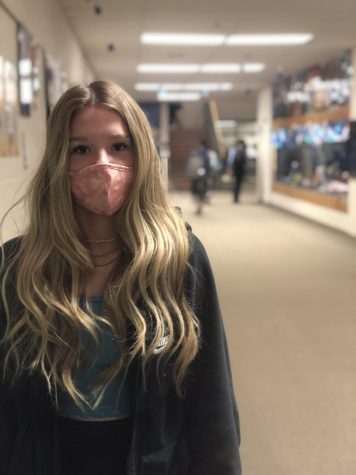Mustang Court in Session
Colorado Supreme Court hears cases at RV

October 24, 2014
Justice was served.
Ralston Valley was once again selected to host the Colorado Supreme Court.
According to statute, the term of the Supreme Court begins in October—so, in keeping with tradition, on October 1, students in Freshman Government, AP Comparative Politics, and Legal Systems will have a chance to witness, first-hand, the Colorado Supreme Court in action.
The program began in 1986 and is known as “Courts in the Community.” The primary goal of this program is to give high school students hands on experience in how the Colorado judicial system operates and how disputes are resolved in the highest level of our state court system.
Essentially, our school auditorium becomes the courtroom for the Colorado Supreme Court for a day. Students will witness proceedings for a civil case, Burnett v. Colo. Dept. of Natural Resources, and a criminal case, Martinez v. People.
The civil case, Burnett v. Colo. Dept. of Natural Resources, deals with a woman who had a large tree branch fall on her tent while she was camping at Cherry Creek State Park.
She sustained a number of injuries including a skull fracture and broken vertebrae. The lower courts ruled that she could not take the State of Colorado to court because of government immunity.
The Supreme Court will listen to arguments that she should be able to take the State of Colorado to trial.
The criminal case, Martinez v. People, is a murder case that is being appealed based on claims that the judge’s instructions to the jury were confusing. The felon is currently serving a life sentence and is presenting his appeal to overturn the guilty verdict.
The last time the Colorado Supreme Court was at Ralston Valley was in 2011. Mrs. Barbara Schrader, Social Studies Department Chair, is in charge of preparation for the justices.
Based on the previous appearance of the court, Schrader is optimistic that the session will be well received.
“The students gave a very positive reaction,” Schrader said of the 2011 court visit. “We had planned initial lessons on the cases beforehand and the students seemed to enjoy them. When they heard about the Supreme Court coming to RV, they became very excited, especially the kids who are interested in becoming lawyers or justices.”
For students with an interest in law, the benefit is immense.
“Students get to see firsthand how the Supreme Court functions,” Schrader noted, “rather than just reading about it in a textbook.”
On the morning of October 1st, teachers and justices dressed appropriately in suits and ties while students, celebrating Homecoming, provided quite the contrast, wearing the extremely bright neon popularized in the 1980’s.
Ready to preside, the seven Supreme Court justices shared thoughts about their experiences. For Chief Justice Nancy E. Rice, challenges exist as the person in charge of Colorado’s most important court.
“Deciding the cases can be difficult especially since Colorado has some of the hardest legal issues, and most of the cases we decide can go both ways,” Rice explained. “And trying to decide what is correct and what is just is really difficult.”
Meeting outside the norm of their regular court in downtown Denver is an experience these justices enjoy.
“The thing that makes this program unique is that even though we meet with the students and the teachers, once we start the oral arguments it’s exactly as if we were in our own courthouse,” Rice said. “The students can expect to see a real oral argument just as if they were in the Supreme Court. We don’t water it down at all.”
As the students all filed in to take their seats, wearing their blindingly bright colored clothes, participants and the audience were called to rise for the Supreme Court. From there, regular court proceedings began.
The court began with the Burnett v. State case lasting about an hour with each side given 30 minutes to present their case.
Burnett’s representative based their case on the term “Dangerous Condition”, meaning a piece of public property can present a substantial risk of injury to members of the general public.
The state attempted to persuade the court that Burnett was camping in a place that was considered a dangerous condition. Opposing council delivered the argument of natural condition vs. man-made condition.
Should the natural condition of a tree fall under the definition of dangerous condition?
Both sides presented fairly convincing arguments, leading observers to wonder the direction the verdict would go.
In the Martinez v. People case, the court initially ruled that Martinez and his accomplice, Gabriel Tapia, shared the same intent, which was to kill the victim.
But Martinez’s representative argued that although Martinez was involved with wounding the victim, there is no evidence that suggests that Martinez encouraged Tapia to kill the victim. Opposing council then argued that Martinez had the extra bullets that were used to reload the gun that Tapia used to kill the victim.
After three hours of arguments, a few lucky students were selected to eat lunch with the Justices.
“For the Martinez v. People I had originally sided with People, but after hearing the argument I sided with Martinez,” noted sophomore Daryn Lenahan. “As for the Burnett v. State case, I still sided with the State. Burnett’s argument wasn’t very convincing. I really enjoyed watching the court proceedings, but I’m not sure if I’ll get into law.”
Students in attendance were not presented with a verdict, as justice at this level tends to take some time. However, most of the students echoed the sentiments of Lenahan.
“I enjoyed watching the proceedings because it was very interesting to see how a real case is handled in the Supreme Court,” said freshman Aspen Lucero.
Leading up to the Supreme Court visit, students had been discussing legal issues in various Social Studies classes.
“Our students have been working on analyzing these cases for the past few weeks and they seem to find the cases very interesting,” said social studies teacher Jill Dean. “It teaches them to think like a judge and be objective.”




